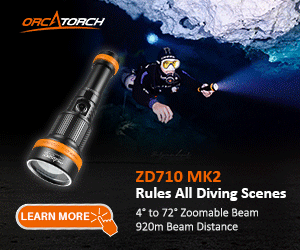daniel f aleman:
Rand, I too am a cave diver, since 1983. Rig configuration for cave differs from wreck which differs from deep water diving... Call over to
Surface Interval in Arlington, talk to Garret Toomey, he's their tech man,
http://www.surfaceintervalscuba.com/staff/Toomey/Garret%20Toomey.htm.
In any case, one shouldn't just figure out doubles for one's self...
Daniel, I think you misunderstood my reference to being a cave diver. I wasn't trying to get into a pissing contest with you. Obviously you have far more experience than I do. I was stating how limited my background is.. I am
only a cave diver and so the typical cave diving hose routing is the
only one I've been exposed to.
DIR, as I understand it, would use the hose configuration I described for all types of diving hence the "many divers.." qualifier in my original post.
Can you explain some of the other configurations? I am truly curious (but not curious enough to call SIS; they don't like me over there).
As far as learning doubles on your own, I strongly disagree with you. While the ideal situation would be to have the help of a mentor, learning on one's own in the safety of a pool or familiar quarry I feel would be far preferable to learning during an advanced class such as decompression procedures or basic cave. Not only are you in unfamiliar environments during these classes but any time the instructor has to take out to help you with basic diving issues is time that is likely to be sacrificed from covering other material for which the class is designed. Now if they had a "doubles" class, I would rethink this but as it stands now it seems that waiting to learn doubles in basic cave would be the worst case scenario.
Finally, I understand that you are a very outspoken DIR-critic. I could be wrong there, perhaps I'm confusing you with someone else. Personally I'm not DIR at all but I use a lot of their techniques. I think the reason why is evident in this thread. DIR makes information publically available for all. Notice all the links to configurations on this page are DIR/GUE sites? Sharing of information, not requiring one take some class or join some group, is almost always beneficial.
Dawg: AFAIK, DIN is always preferable. I personally don't see any advantage to 300 bar over 200 bar DIN (despite the names, it has nothing to do with rated pressure) and 300 bar DIN means it takes longer to screw in your regs.




